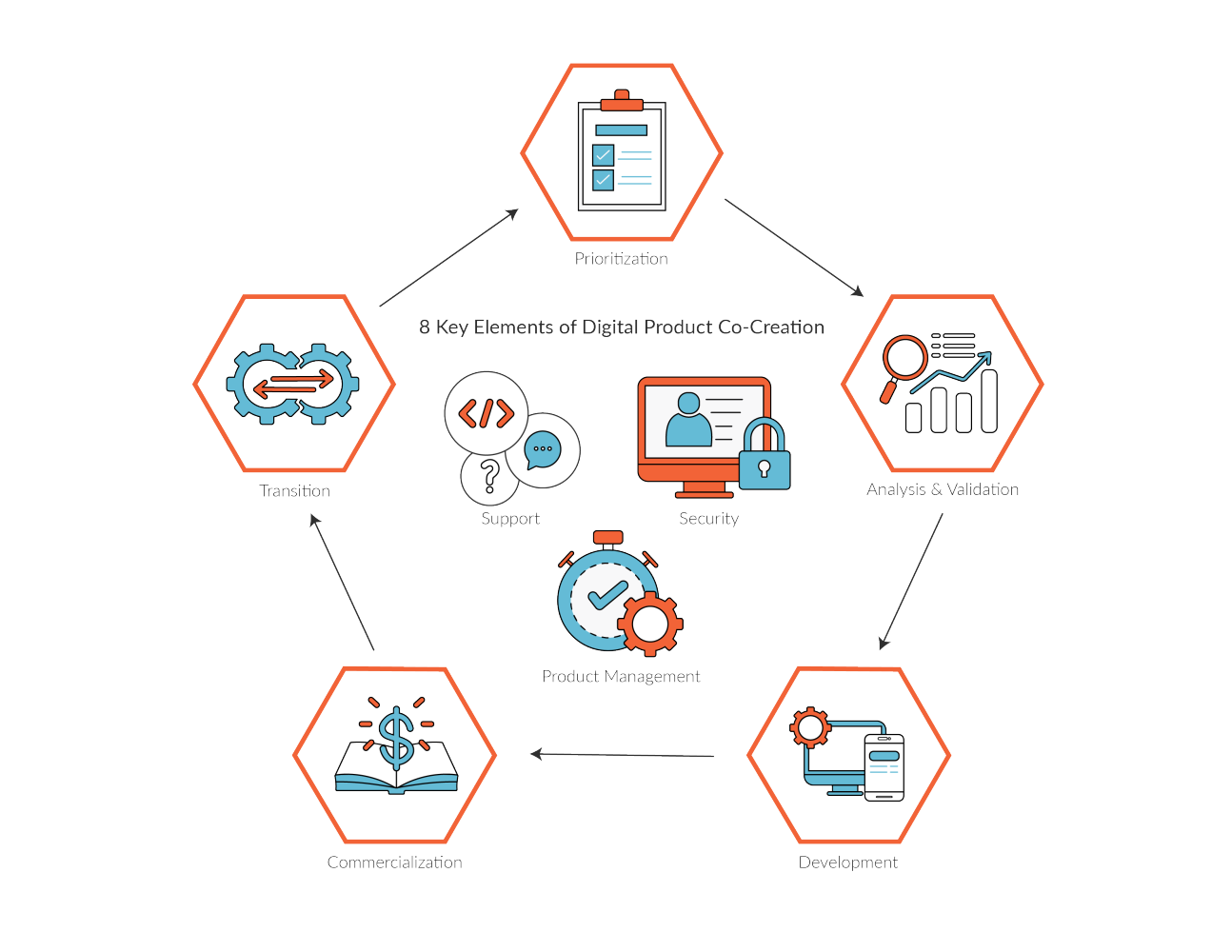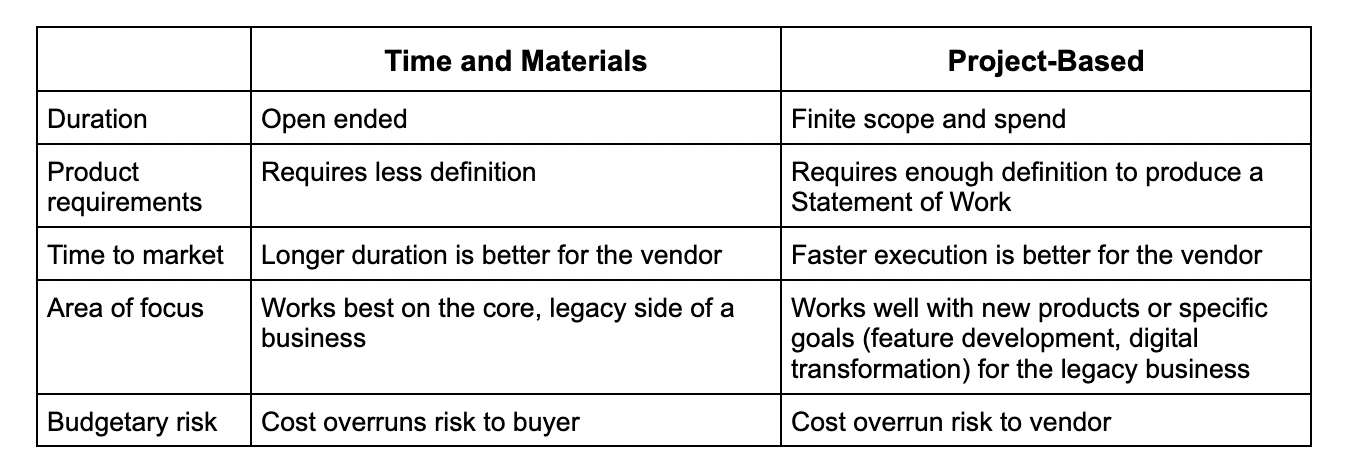Digitally innovative brands often outgrow others when it comes to revenue. While many of the brands will choose to focus digital efforts on improving customer experiences, the most forward thinking are considering opportunities to drive new sources of revenue from digital products. These digitally progressive firms will outperform their competitors and lead their industry.
In this paper we will take a deep dive and explore the decision-making process of creating innovative digital products within your organization. We have broken it down into three areas of the process:
- Creating a true innovative environment
- Creating your digital product team
- Evaluating external Partnership Opportunities and Selection
The real question is do you and your company want to be leaders and innovators, or do you want to follow and potentially fall behind and become irrelevant? The answer seems quite simple and can determine the future of your organization.
Creating a True Innovative Environment
In order to create successful digital products to drive your business forward, you need to make sure to have:
- Long Term Executive Leadership Buyin
- The Capacity and Capability for all Areas of Digital Product Creation (8 Keys)
Both of the above are outlined in this section and we realize that many leaders do not understand what it takes to be a digital product leader, and the huge potential downside of falling behind. This is why it is critical to educate your leaders and colleagues about this to help ensure long term success for your organization
Executive Buy In
Executive buy-in goes beyond endorsement; it represents a commitment from top-level leadership to actively support and prioritize innovation initiatives throughout the organization. This support should encompass not only financial backing but also a willingness to allocate resources, facilitate cross-functional collaboration, and champion a mindset that embraces experimentation and risk-taking for the long term.
Leaders must understand that a commitment to innovation requires a long term investment. Successfully innovative digital products require a different set of KPIs, that may look different than how you are measuring success in your core business. Oftentimes, executive level leadership will want quick return on investment, or to see indicators of impact to their bottom line right away. Neither of these things are the case with the investment into innovation, and this key understanding will help to create an innovative environment that is positioned to succeed.
Securing executive buy-in requires clear communication of the strategic importance of innovation in achieving business objectives and maintaining competitiveness in a rapidly evolving digital landscape. Leaders must understand that innovation is not just a buzzword but a strategic imperative for long-term success. This understanding can be cultivated through ongoing dialogue that emphasizes the potential for innovation to drive revenue growth, enhance customer experiences, and mitigate risks associated with market disruptions.
All Areas of Digital Product Creation (8-Keys)
As you are planning to create each digital product you need to analyze what is needed in each of the 8 keys (listed below) and if you have the internal capacity and capability needed for that key in creating your new digital product.

After you map to the 8-keys you will have a clear understanding of the capabilities you have internally and the pieces of the process that need to be outsourced.
Successful innovation requires expertise in all of the following areas:
- Ideation and Prioritization Processes
- Analysis and Validation
- Commercialization
- Development and Design
- Product Management
- Security
- Support
- Transition and Scale
After considering the 8-Key elements of the digital product lifecycle, many companies form an Innovation team. First, taking a look internally at resources to execute at each step. New innovation programs require complex resources, which is why it’s so hard for purely internal teams to successfully tackle these efforts. So, developing external partnerships for all or part of the project allows your internal team to learn the ins and outs of the innovation game, minimizes risk and time to product deployment.
Your Digital Product Team
Now that you’ve secured executive buy-in, and have considered each step of the digital product lifecycle, it’s time to evaluate how you are going to build a team to execute. This decision requires multi-facetted resources with expertise every step of the way.
The first decision is which parts will you use internal resources for, which will you look outside for, and which will you take a hybrid approach with?
Recent research corroborates what we’ve seen in our years of experience – the most effective workforce for delivering on new products is a hybrid of internal and external resources. Despite the evidence and the ease with which a company could test this themselves, too many companies remain entrenched in trying to do everything internally. Leaders focused on results manage a modern workforce ecosystem with an orchestration approach to determine how the discrete participants in the structure work together to create value.
Internal vs external resources
Research suggests larger gains can be achieved by enhancing the performance of the entire team with supplemental external support. This realization, together with the potential of leveraging partner capabilities, has resulted in a trend where customers increasingly are entering into closer collaborations with their digital outsourcing partners.
Also, outsourcing with the right digital partners can help you better serve internal stakeholders by getting projects done right, on-time and within budget.
When it comes to utilizing a third party partnership for execution, there are many types of vendors that specialize in different areas. Some vendors are great at design, others engineering.
It is important when selecting external vendors for your digital products that they have the skills and capacity to handle as many or all of the 8 keys that we have listed earlier in this paper. Given your outsourcing requirements for each product may differ, having a vendor or two with all 8 key capabilities will help you more easily and efficiently successfully and deploy each digital product.
Evaluating Partnership Opportunities
When evaluating, you want to make sure your digital partner:
- Has capabilities and expertise in each key above
- Your partner works on a project based contract vs. time and materials or staff augmentation. We have found that project based is best because the budget owners that are requesting the project to be built tend to care about three things:Getting the project done on timeGetting the project done on budgetMaking sure the project is done correctly
Our experience has shown that a project based team has a higher success rate and more often satisfies your internal customer’s three main priorities listed above. That is the project is done on time, on budget and the release is successful.
The nature of our work has afforded a wide view into the approaches our corporate partners take to solve their digital product development needs. A frequent decision point is whether to add to your staff with contractors, or to delegate a project to a strategic vendor.
Staff Augmentation is the temporary addition of personnel to your staff in order to augment capacity of your organization. This approach has the same set of pros and cons as a time and materials based strategic vendor, which is the duration is often open ended, and it benefits the contractor to take longer for completion of a project. When evaluating for new product creation, this approach will end up costing more in the long run and in our experience leads to more missed deadlines.
The below table compares the benefits and risks associated with Project-Based outsourcing vs Time and Materials. As you can see with project based outsourcing the burden and risk falls more heavily on the outsourced partner de-risking the project for you and your internal stakeholders.

Who is Taivara?
Taivara is a trusted partner helping organizations to co-create new digital products. We take a holistic approach to innovation with expertise in all 8-key pillars of co-creation mentioned above. We strive to make our clients 100% satisfied, 100% of the time. Our goals are to ensure we uphold our client’s credibility within their organizations by getting things done right, on
time and within the budget.
Taivara is well versed in most methodologies and has experienced developers creating world-class digital products. When it comes to your project, our team is happy to adapt to what our clients prefer, but our main goal remains to get your product delivered that exceeds client expectations, on time and on budget.
Contact Us: Jacq@taivara.com

